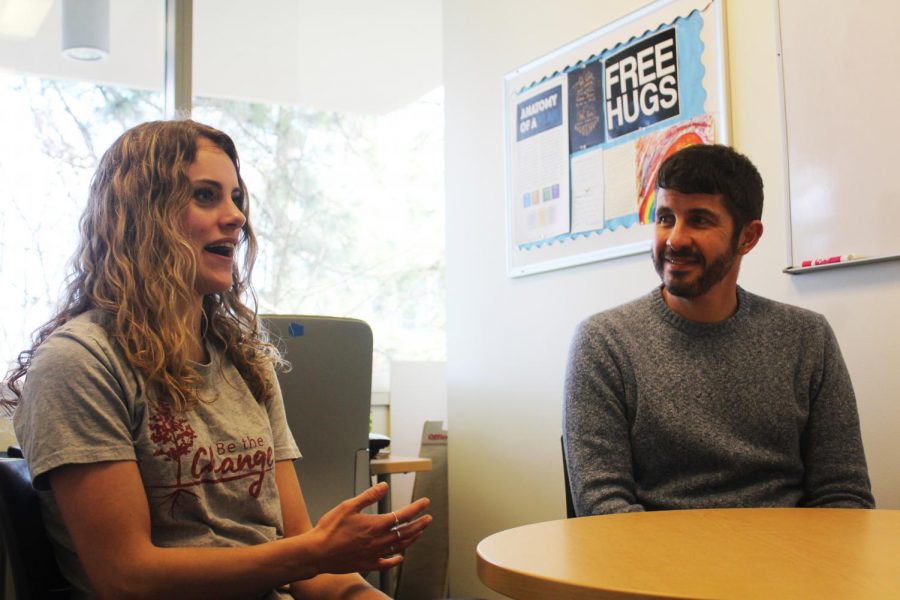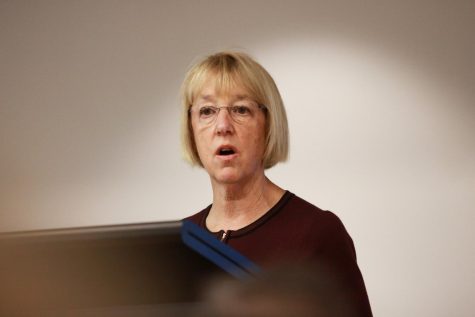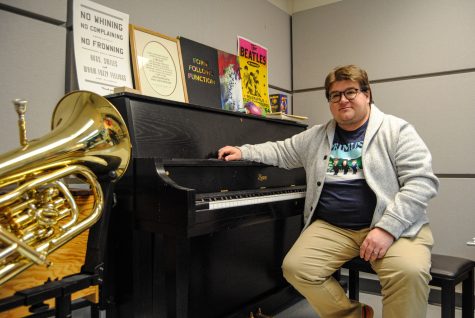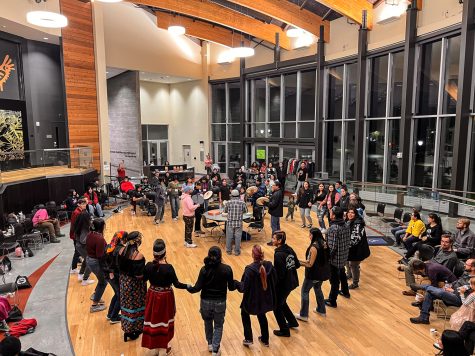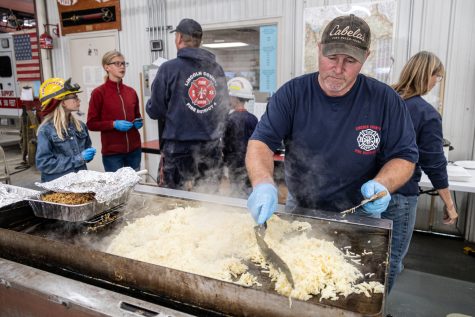New volunteer system tracks hours
National average for one volunteer hour is about $25; economic impact of community service recorded by two organizations
Audrey Weaver, left, Center for Civic Engagement peer mentor, and Ben Calabretta, CCE interim co-director, describe how students can receive help when they visit the CCE on Wednesday at the CCE.
March 13, 2020
Volunteers for the Center for Civic Engagement at WSU have put in about 60,000 community service hours while making a $1.5 million economic impact since August.
Ben Calabretta, CCE interim co-director, said the CCE started using GivePulse in August to track volunteer hours when the university transitioned to Campus Labs.
The CCE, like the rest of WSU, used to operate through CougSync. Campus Labs did not offer a community engagement management function, so the CCE started to use GivePulse instead, Calabretta said.
“There’s been like a learning curve for sure with the new system, but it seems like everyone’s getting it,” Calabretta said.
Administrative staff recently put in a request to see if there are other systems that would suit the CCE better, he said.
The GivePulse system updates the statistics throughout the year, Calabretta said, instead of just one end-of-the-year report.
“It’s just a way that we measure time. But it helps tell that story, that’s actually making a pretty significant difference in the community,” Calabretta said.
The economic impact recorded by GivePulse is determined by an organization called Independent Sector, which assigns monetary values to volunteer hours, he said. The national average of one volunteer hour is about $25.
“If it wasn’t for a few students, those organizations might have to pay someone to do it. And what’s that actually worth?” Calabretta said.
Any project working with animals or children usually is popular like humane societies or STEAM programs, he said. STEAM stands for Science, Technology, Engineering, Art and Math.
One CCE peer mentor volunteers for a STEAM club in Albion in addition to her mentor duties. Audrey Weaver started as a peer mentor for the CCE over a year ago when she was a freshman.
“The kids at the school love it when students come in,” Calabretta said. “They look up to them and it makes their day.”
He said there are several STEAM clubs for elementary schools including in Palouse, Moscow and Pullman schools.
Weaver said the STEAM club is an after-school program for children to interact with WSU students and complete educational activities.
There were about four kids at the program when Weaver visited.
Weaver said she helped them color a diagram of a brain and cut them out during the last time she visited Albion. The children then made the diagrams into hats which they could wear.
“They all had really different backgrounds, really different family lifestyles,” Weaver said. “They opened up once they started playing games and doing projects.”


